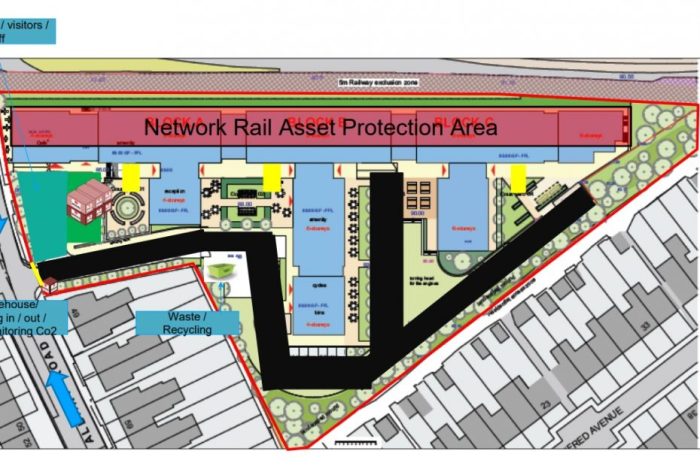Construction Management Plan A Comprehensive Guide
Construction projects, from residential homes to sprawling industrial complexes, demand meticulous planning and execution. A well-defined construction management plan is the bedrock upon which successful projects are built. This guide delves into the critical elements of a robust construction management plan, offering insights into planning, scheduling, cost management, risk mitigation, quality control, and communication – all essential for achieving project objectives on time and within budget.
This comprehensive overview unpacks the intricacies of construction management, providing practical tools and strategies for each stage of the project lifecycle. From defining clear project scopes and objectives to executing flawless implementation, we explore the key components that distinguish a successful construction management plan. The detailed breakdown of each element—from scheduling methodologies to risk assessment—provides actionable steps for anyone involved in construction projects.
Defining Construction Management Plans
A construction management plan (CMP) is a comprehensive document that Artikels the strategies, procedures, and timelines for successfully completing a construction project. It serves as a roadmap, guiding all stakeholders through the project lifecycle from initiation to completion.
Key Components of a Construction Management Plan
- Project Scope Definition: Clearly defines the project’s objectives, deliverables, and limitations.
- Project Schedule: Artikels the timeline for each task and milestone, including dependencies and potential delays.
- Budget and Cost Management Plan: Details the estimated project costs, funding sources, and methods for tracking expenditures.
- Risk Management Plan: Identifies potential risks and develops mitigation strategies to minimize their impact.
- Quality Control Plan: Specifies the standards for quality assurance and inspection throughout the project.
- Safety Plan: Artikels the safety procedures and protocols to protect workers and the public.
- Communication Plan: Establishes protocols for communication between project stakeholders.
- Legal and Regulatory Compliance Plan: Ensures adherence to relevant building codes, permits, and regulations.
- Project Documentation Plan: Artikels the types of documentation required, their format, and storage procedures.
Types of Construction Management Plans
Construction management plans are tailored to the specific nature of the project. Residential projects, for instance, typically have a simpler scope compared to large-scale commercial or industrial projects. The complexity and detail within the plan will vary accordingly.
Significance of a Well-Defined Construction Management Plan
A well-defined CMP is critical for project success. It fosters clear communication, minimizes risks, and ensures adherence to budget and schedule constraints. This proactive approach promotes smoother project execution and higher likelihood of successful completion.
Phases of a Construction Project and Corresponding Plan Elements
| Phase | Plan Element | Description | Example |
|---|---|---|---|
| Pre-Construction | Project Scope Definition | Defining project goals, deliverables, and constraints. | Determining the exact size, materials, and finishings for a house. |
| Pre-Construction | Risk Assessment | Identifying potential risks and developing mitigation strategies. | Analyzing potential weather delays and establishing backup plans. |
| Construction | Schedule Management | Tracking progress against the project schedule. | Monitoring the progress of foundation work to ensure timely completion. |
| Construction | Quality Control | Ensuring work meets quality standards. | Inspecting concrete pours to guarantee the correct mix and placement. |
Planning and Scheduling
Detailed project scheduling is essential for successful construction projects. It provides a roadmap for all project activities, outlining tasks, dependencies, and timelines.
Detailed Project Schedule Creation
- Task Breakdown: Decomposing the project into smaller, manageable tasks.
- Sequencing: Determining the order of tasks and identifying dependencies.
- Estimating Durations: Assessing the time required for each task.
- Resource Allocation: Assigning resources (personnel, equipment) to tasks.
- Contingency Planning: Incorporating buffer time for unforeseen delays.
Project Duration and Resource Allocation Estimation

Various methods are employed to estimate project duration and resource allocation, including parametric modeling and expert judgment. These estimations provide a baseline for comparison against actual progress.
Scheduling Methodologies
Different methodologies, such as Gantt charts and Critical Path Method (CPM), offer various perspectives on project scheduling. Each method has strengths and weaknesses, and the optimal choice depends on the specific project needs.
Importance of Contingency Plans
Incorporating contingency plans into the schedule is crucial. Contingency plans address potential delays or issues, ensuring project completion within the defined timeframe.
Scheduling Software Comparison
| Software | Features | Pros | Cons |
|---|---|---|---|
| Microsoft Project | Task management, resource allocation, and reporting. | Widely used, user-friendly interface. | Can be complex for simpler projects. |
| Primavera P6 | Advanced scheduling and resource management. | Excellent for large, complex projects. | Steeper learning curve. |
| Asana | Collaborative task management, communication. | Suitable for small teams, integrates with other tools. | Limited advanced scheduling capabilities. |
Stakeholder Communication
Effective stakeholder communication is essential throughout the planning and scheduling process. Regular updates and clear communication help to manage expectations and resolve issues proactively.

